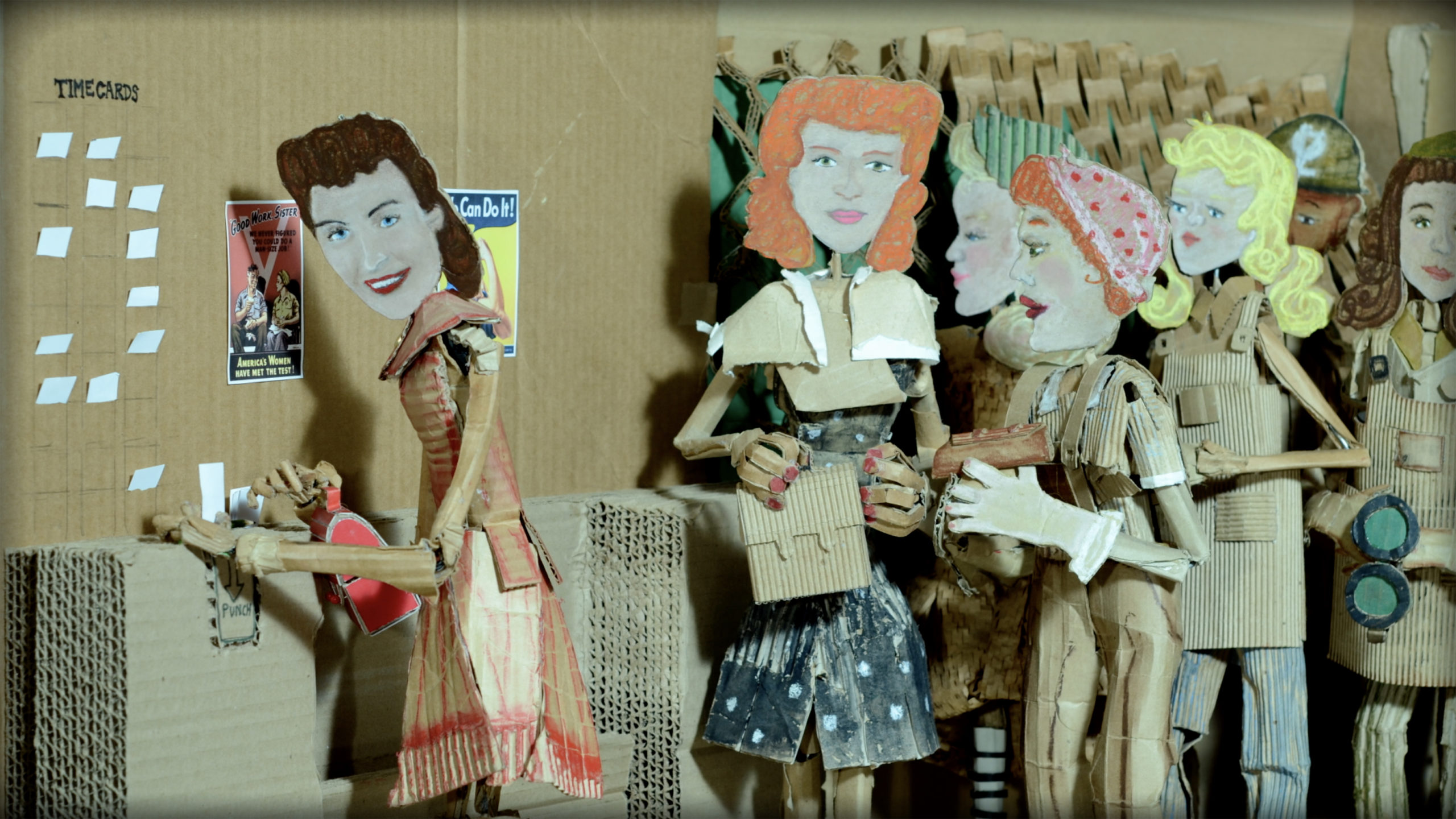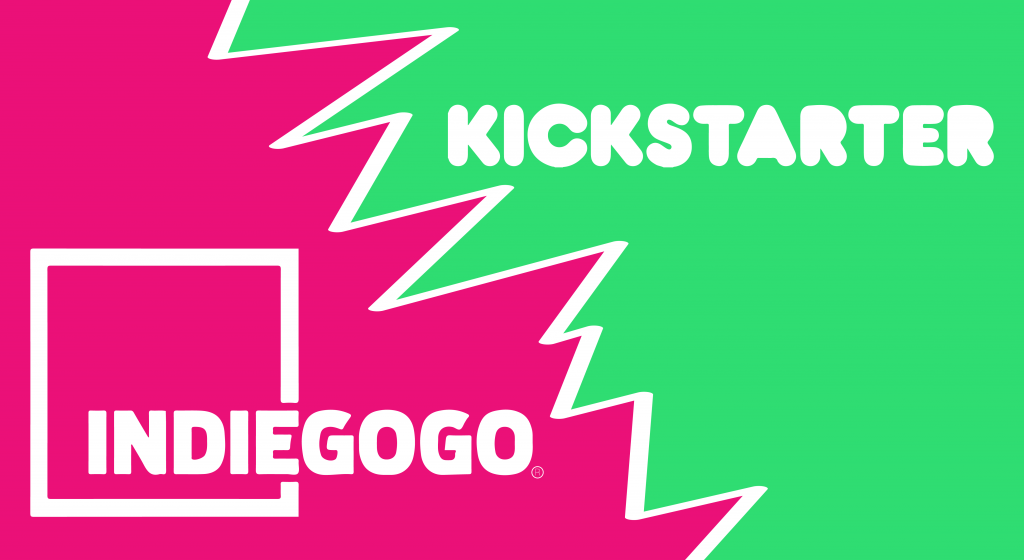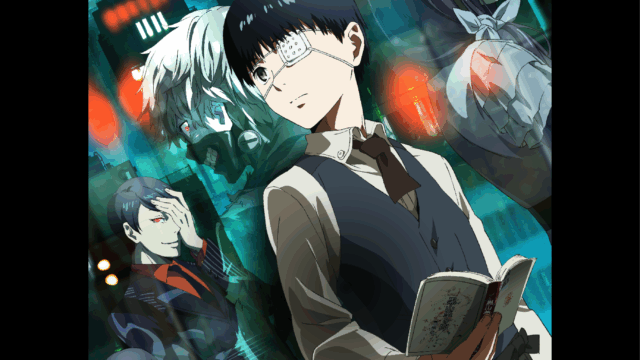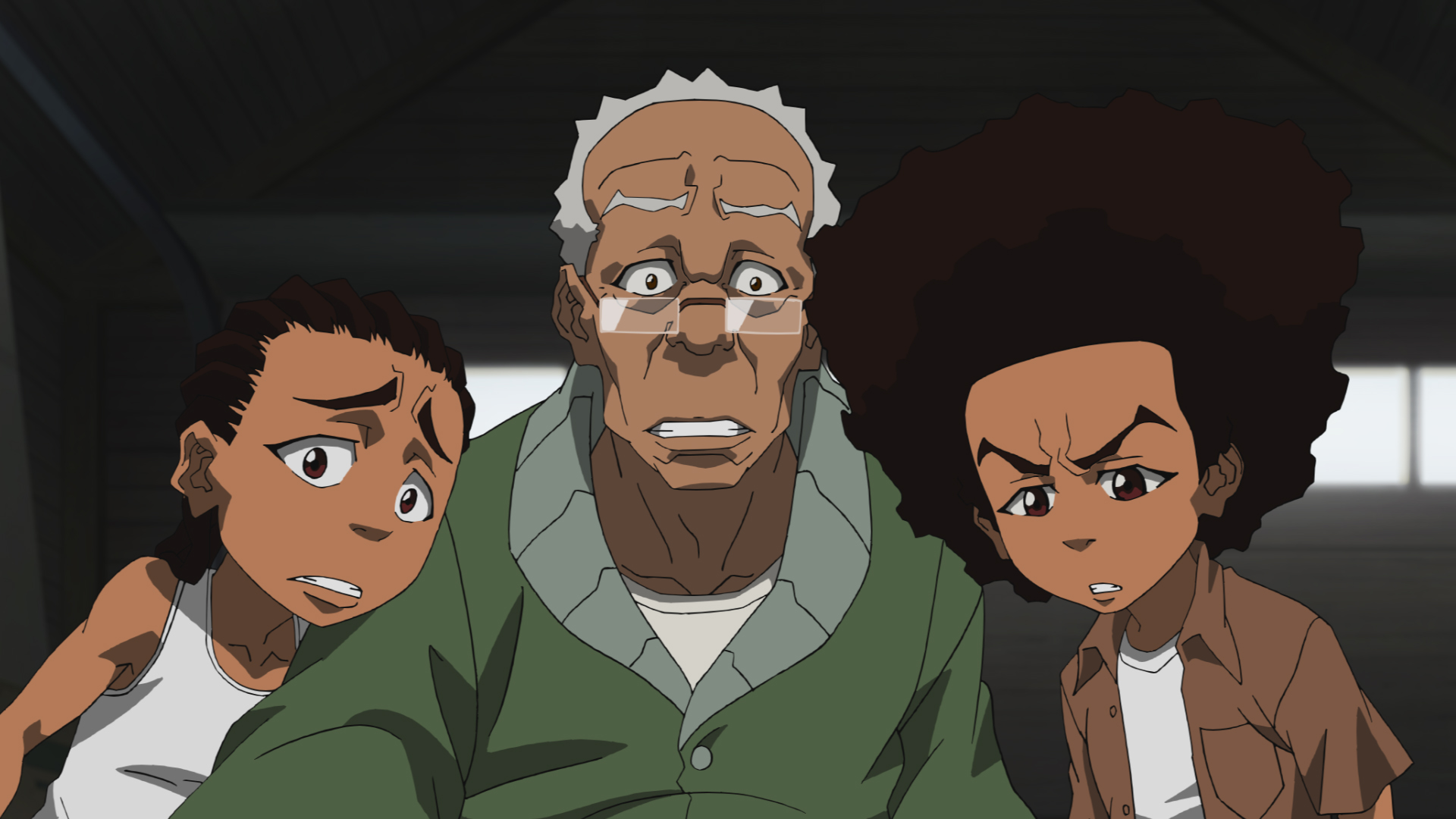Exclusive Interview: Anne de Mare and Kirsten Kelly Discuss New Short “The Girl With The Rivet Gun”
The 1940s were an exciting time for women in America. With their husbands fighting the Second World War, it fell to them to take over the farms, factories and other industries that kept the economy up and running. But this unprecedented change in gender roles also gave way to new challenges. Working women were often discriminated against for both their sex and skin color, typically paid less than their male colleagues, and widely expected to return to be re-domesticated once the war was over and the men came back.
Documentary filmmakers Anne de Mare and Kirsten Kelly have a knack for extracting intimate and personal stories from large, complex social issues. Their latest short, The Girl With The Rivet Gun, takes a closer look at the real faces behind cartoon icon Rosie the Riveter. Bringing their stories to life with charming and creative cardboard animation by Danielle Ash, this all-female production celebrates the resourcefulness, adaptability and ingenuity of the first generation of Rosies as well as their descendants.
Tim Brinkhof: This short grew out of an archival project you did at NYU. Were you always planning on using the footage you collected as part of that project for this film, or did one thing grow out of the other?
Anne: We knew going into that project that we wanted to keep that option, and when we first started talking to NYU, we wanted to retain the ability to use the material creatively. We did not know what that was going to look like until we really had a chance to process the dozens of interviews that we did. We had some incredibly stories we really had not heard before, certainly not in the first-person, but we also knew we didn’t want to make a traditional talking heads film; we wanted to do something that would really bring the women in it to life and highlight these golden story moments that we had found. So, the decision to WORK with animation, to bring those stories to life, was really the moment where the current project began to take form.
Tim Brinkhof: How did you come to find Danielle Ash, the animator you worked with?
Kirsten: When we first came up with this idea, we wanted to do the project with all women animators, and make an animation workshop. We started to explore what the project would look like with different styles in order to bring our ideas to life in a visual, animated way. We got to meet all of these incredible women animators, and they were all pioneers in the animation world, like the Rosies were pioneers. We had a list of story moments that we wanted to make in different styles of animation, but it just evolved that Danielle was the first person we wanted to work with.
Tim Brinkhof: Danielle has a very specific style. Did you choose to work with her because it fitted well with the kind of story you were trying to tell?
Anne: Definitely. There is something about Danielle’s insane attention to detail, and her construction of very physical and mechanical space. The maker-aspect of her work was specifically connected to bringing the women in the factories, and their stories, to life. We worked specifically on the story and themes and ideas we wanted to pull out of the interviews, and how they would weave together while Danielle worked in the studio, creating the set and the characters and literally hundreds of tiny little cardboard artifacts.
Tim Brinkhof: Correct me if I’m wrong, but I believe this is your first film to feature animation. Was it challenging working with this medium that was still new?
Anne: We have a background in theatre, not film, where you work with different artists—actors, designers, writers—and it’s your job is to get them to do their best work. The same is true with animation: you have to make it possible for the artist to do their best work. Of course, there are things you have a different idea about, but you also got to work with an artist, let them work through their process and come out the other side of their idea. It’s a back and forth.
Tim Brinkhof: Was the final film at any point during development going to look different than we got?
Kirsten: Initially, the film was gonna be all animation. Not partly, but all. As we put them together we realized we kept coming back to moments of those original interviews, the real life women in their eighties and nineties, and that that gave emotional depth to the film. We got to know them both as young women going through these moments in their lives and as elder women looking back and giving these historical and emotional perspectives on what those moments did to them for the rest of their lives. Once we figured that out, everything started feeding off each other.
Tim Brinkhof: One thing that stuck out to me about the animation was that there was a lot of movement, but no facial expressions. Why was that?
Anne: There actually are two specific facial animations that do exist in the film, but they are very subtle. One is when Milly is talking about the race riots—we let her face break from the normal expression to a much more thoughtful, reflective face. And then there’s a moment at the very end with Esther when her boss says, “I’m not gonna give you a raise, you can go,” and her face melts down a little bit in anger. But they are very small moments in the film. We never thought of it in the way you brought up, but that would be a very interesting question to ask Danielle.
Tim Brinkhof: What is going to happen to this film in the future, have you found a place for it yet?
Kirsten: We are trying to get this into women’s history museums and give it a huge educational presence as well. We really want this to be in curriculums because it’s (hopefully) very entertaining, and shows a much more complex side to this important moment of history that often just gets glossed over with one character: Rosie.
Tim Brinkhof: History tends to deal with these subjects in such an impersonal way that people—especially young people—have a hard time realizing their true significance, so I think your film makes an excellent contribution in the field of education.
Anne: When we finished it, we showed it to some teenagers and got the best comment we could ask for, which is: “It’s amazing how different things were and how much they were the same.” Talking about the race-relations aspect, the pay inequity, and the fact that people were articulating these conflicts at a time when…well, young people sometimes think the problems of today are new, and this was just a reminder that things have changed so much, but also not nearly enough. Also, telling women’s stories right now feels especially timely and looking back at a time in history when women’s stories were oversimplified, and bringing some complexity to that, it feels like a real honor to tell these stories right now.
Get more information about The Girl With The Rivet Gun here.
























"There are also other characters that come and go (also owned by the Warner Bros. Discovery conglomerate media company)."
Huh. Is that just referring to other characters from the show itself, or is this implying that the new season is going to have cameos from other WBD IPs